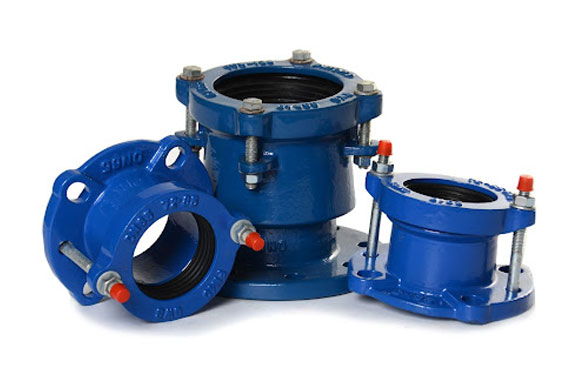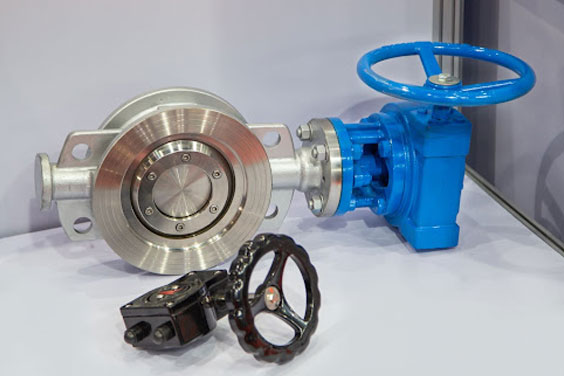
Source: Deposit Photos
As it has in its name, the lug type valve consists of lugs used for mounting the valve to the flanges that are placed in the terminal section of a pipe. This is done to facilitate the easy removal and replacement of any length of the pipe. In general, there are 8 or 12 lugs, and approximately 6 of them are used in the connection of pipe sections to one another.
Lug is a type of butterfly valve which has metal bolts threaded around the entire body of the valve. The main application of this valve is to connect and disconnect one-sided piping systems so that the other side of the system is not disturbed. Since the lug type butterfly valve is becoming so famous, it is often used in place of its counterpart butterfly valve, the wafer-type butterfly valve.
The lug type butterfly valve is generally made of metals such as steel or ductile iron. To achieve an efficient connection with the bolt, this valve is composed of threaded lugs which are tapped and placed on the valve flanges. The lug-style butterfly valve is well-suited for service at the end of the line, but a blind flange is always preferred. In this informative piece, you will get an idea about the lug type butterfly valve installation in detail.
Pre-Installation checklist

Source: Deposit Photos
So, now you are aware of the basic features and uses of the lug type butterfly valve. It is time that you get to know about the lug type butterfly valve installation in detail. Here are the steps pointed out for you.
The first step that you need to do when installing the lug type of butterfly valve is to see that the temperature and pressure conditions of the product are within the required capacity.
While purchasing the lug type butterfly valve, you need to give importance to the product’s raw material. This is because if the raw material of the valve is not chemically compatible with the fluid which would be flowing in the pipeline, then the results would be undesirable.
The next thing you need to do for this installation is to check the distance between the pipe flanges. Doing so will ensure you that the pipe is sufficiently clear and ready for valve installation.
The selection of the adequately sized ball valves is also significant. Often, floating ball valves are seen to complement the working of a lug type butterfly valve. They come with a tight, enclosed spherical pattern that prevents leakage when the lug-type valve is installed with a pipeline.
Once you achieve all the favourable conditions and are ready for lug type butterfly valve installation, make sure that you have appropriate lug valve handling equipment since it will be difficult to fix the larger lug valves into the perfect position in the absence of such professional equipment.
There is one more essential factor that you must check. It is the outlet and inlet sizes of the new unit, along with the lug type butterfly valve. They should match the sizes of your already existing pipes.
Installation procedure

Source: Deposit Photos
Firstly, you need to install the level or handwheel depending on whether it is manual or gear dependent. Then you need to turn the lever in a clockwise position to fully close it. You need to make sure that the disc should be aligned parallel to the ends.
If you are unable to align the disc properly, then slightly try to loosen the top plate and gradually start turning the lever in the clockwise direction, after which again tighten the top plate. If you are installing a valve that is operated by a gear, then you just need to fix the nuts which are present at the side of the gearbox.
The disc can be fully opened and closed several times to ensure the correct operation. Now you need to proceed with the valve installed in your existing piping system. You need to decide if your intention is to fit the lug type butterfly valve horizontally or vertically. Installing the lug type butterfly valve horizontally is often beneficial in the presence of check valves as it prevents wear of the disc, eventually extending the longevity of the valve. You need to check the alignment of the pipeline beforehand.
It is not right to adjust the lug type butterfly valve in the alignment of the pipeline. Also, you should thoroughly inspect the flange ends of the lug type butterfly valve as well as the terminal flange ends of the pipeline. This investigation is crucial since you can be sure that both the valve as well as the pipeline are defect-free.
The lug type butterfly valve, unlike the wafer valve or angle globe valve, needs to be installed between the flanges, which have tiny cap screws along with the outlet as well as the inlet of the valve. Then carefully insert the valve with a closed disc into the flange. It is crucial to verify that the valve is tight and placed in the center of the flange.
After fixing the valve, you need to open the valve in full position so that no obstruction takes place in the disc movement. After the verification, the bolts in the flange have to be tightened in a criss-cross or star pattern so that the bolts can be eventually loaded. You need to exert pressure on the pipe so that if there is any leakage occurring, it can be stopped then and thereby tightening the bolts.
Bottom Line
Suppose you feel that our old piping system is not functioning efficiently anymore but are hesitant to discard them altogether. Why don’t you reconstruct it and transform your old piping system into a super-efficient one? With the help of this compact article, not only will you be successful in the lug type butterfly valve installation, but you will also be able to complement the functioning of the lug type valve with a metal seated butterfly valve.
Hence, go ahead and make your piping system super efficient with the lug type butterfly valve. So if you are looking forward to buying these valves, you can contact us at Dombor.









